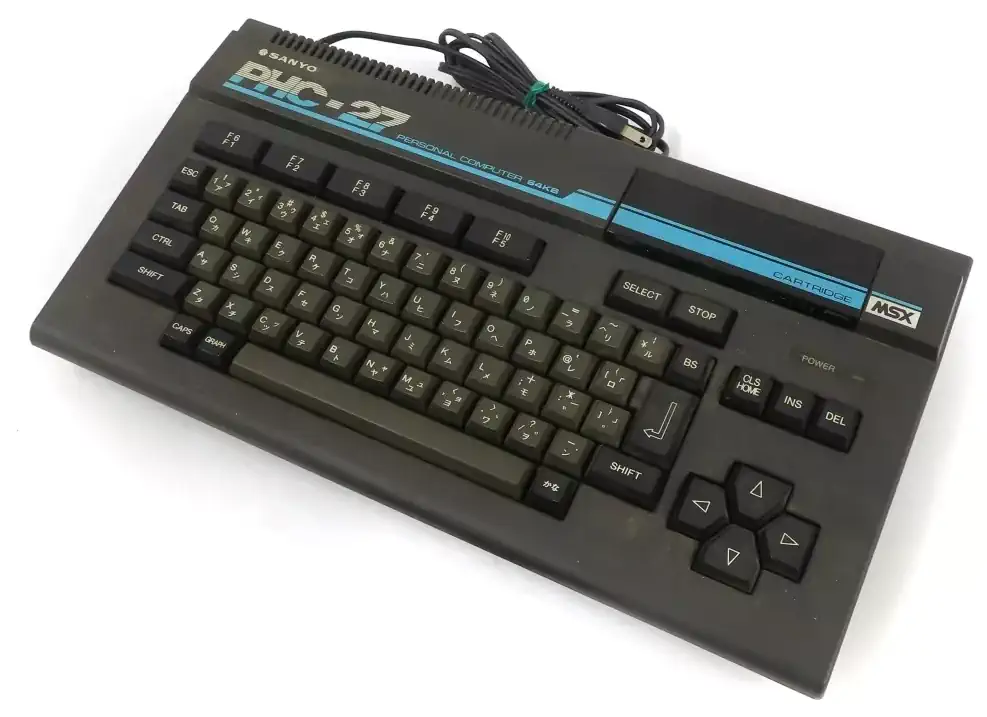The Sanyo PHC-27
The Sanyo PHC-27 was released in 1985 as a compact and affordable MSX1 computer. It came with 64kByte RAM and had the Sharp LH0080A, Z80A compatible, CPU. The computer was marketed to home users and educational institutions. Later Sanyo created a separately branded version of this computer the PHC-SPC or just the Sanyo SPC, which was especially produced for the educational market.
MSX Cassette Pin Layout
The MSX Standard calls for all MSX computers to have a standard data-cassette port. This port transports the audio-in/out signals to and from the datarecorder and the computer has a relay-switch on board to turn the recorder on and off.
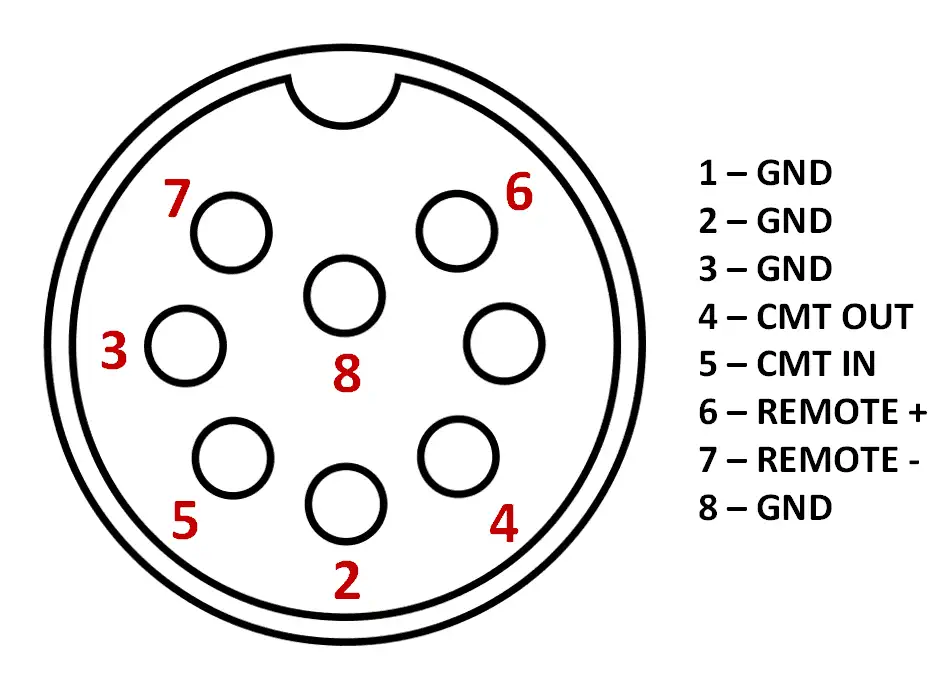
MSX Cartridge Connector
The MSX Cartridge system uses a 50-pin flat-edge connector to connect to the systems expansion bus. The cartridge slot maps into one of the main- or sub-slots.
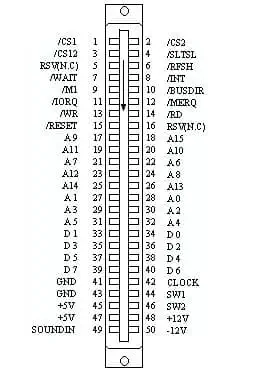
MSX Joystick Connector
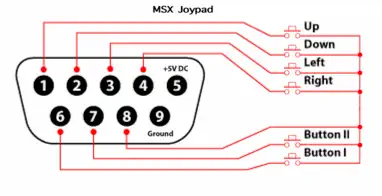
Programmable Sound Generator (AY-3-8910 compatible PSG)
The AY-3-8910 is a 3-voice Programmable Sound Generator, or PSG. It was designed by General Instruments in 1978 for use with their own 8-bit PIC1650 and their 16-bit CP1610 computers.
The PSG is widely used in many arcade cabinets, pinball machines, and many micro-computers. Here is a list of some of the major brands of computer that used the AY-3-8910:
- Intellivision
- Vectrex
- Amstrad CPC range
- Oric-1
- Color Genie
- Elektor TV Games Computer
- All MSX-1 and MSX-2 computers
- ZX Spectrum home computers
General Instrument spun of MicroChip Technology in 1987 and the chip was sold under the MicroChip brand, and licensed to Yamaha as the YM2149F which the Atari ST range of computers use. Functionally the PSG is very similar to the Texas Instruments SN76489.
Variants:
-
AY-3-8910
Comes with 2 general purpose 8-bit parallel I/O ports, used for Keyboard and Joystick in for instance MSX. -
AY-3-8912
Same chip, but in a 28-pin package. Parallel port B is not connected to save cost and space. -
AY-3-8913
Same chip, but in a 24-pin package. Both parallel ports are not connected. -
AY-3-8914
The AY-3-8914 has the same pinout and is in the same 40-pin package as the AY-3-8910, except the control registers on the chip are shuffled around, and the 'expected input' on the A9 pin may be different. It was used in Mattel's Intellivision console and Aquarius computer. -
AY-3-8930
Backwards compatible but BC2 pin is ignored
YM2149F -
YM3439-D
CMOS version of the Y2149 in 40-pin DIP -
YM3439-F
CMOS version of the Y2149 in 44-pin QFP -
YMZ294
Variant of the YM3249 in an 18-pin package. Parallel ports not connected, and all sound channels mixed on 1 port. -
T7766A
Toshiba variant of the AY-3-8910, fully compatible. Used in some MSX models. - Winbond WF19054, JFC95101, and File KC89C72: Fully compatible versions of the AY-3-8910 produced for slot machines.
Yamaha Produced chip, same pin-out as the AY-3-8910, but pin 26 could halve the master clock. Can be used to replace the AY-3-8910 if pin 26 is left disconnected.
TMS9918 Series Video Display Processor (99n8, 99n9, 91n8, 91n9)
The TMS9918 is a series of video display controllers (VDC) manufactured in 1979 by Texas Instruments, also refered to as 'Video Display Processor' (VDP). The TMS9918 and its variants were used in the ColecoVision, CreatiVision, Memotech MTX, MSX, NABU Personal Computer, SG-1000/SC-3000, Spectravideo SV-318, Spectravideo SV-328, Sord M5, Tatung Einstein, Texas Instruments TI-99/4, Casio PV-2000, Coleco Adam, Hanimex Pencil II, and Tomy Tutor.
Key Features:
- 256x192 pattern based color pixels per screen
- 16 different colors
- 8-bit memory mapped CPU interface
- No need for DMA, CPU can access VRAM
- 32 single color Sprites per screen (4 per scanline)
Variants:
- TMS9918A - 60Hz output, NTSC video
- TMS9928A - 60Hz output, YPbPr video
- TMS9929A - 50Hz output, YPbPr video
- TMS9118 - Different RAM than TMS9918A, otherwise identical
- TMS9128 - Different RAM than TMS9928A, otherwise identical
- TMS9129 - Different RAM than TMS9929A, otherwise identical
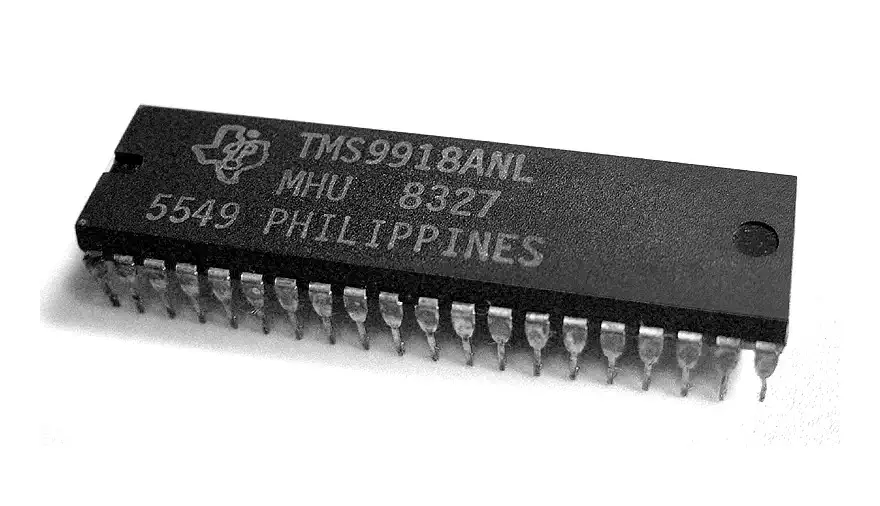
CPU View - Zilog Z80 Family
The Z80 quickly became popular in the personal computer market, with many early personal computers, such as the TRS-80 and Sinclair ZX80, using the Z80 as their central processing unit (CPU). It was also widely used in home computers, such as the MSX range, SORD, and the Amstrad CPC, as well as in many arcade games. Additionally, it was also used in other applications such as industrial control systems, and embedded systems. The Z80 was widely used until the mid-1980s, when it was gradually replaced by newer microprocessors such as the Intel 80286 and the Motorola 68000.
The Z80 microprocessor was developed by Zilog, a company founded by Federico Faggin in 1974. The Z80 was released in July 1976, as a successor to the Intel 8080. It was designed to be fully compatible with the 8080, but also included new features such as an improved instruction set, more powerful interrupts, and a more sophisticated memory management system.
The Z80 quickly became popular in the personal computer
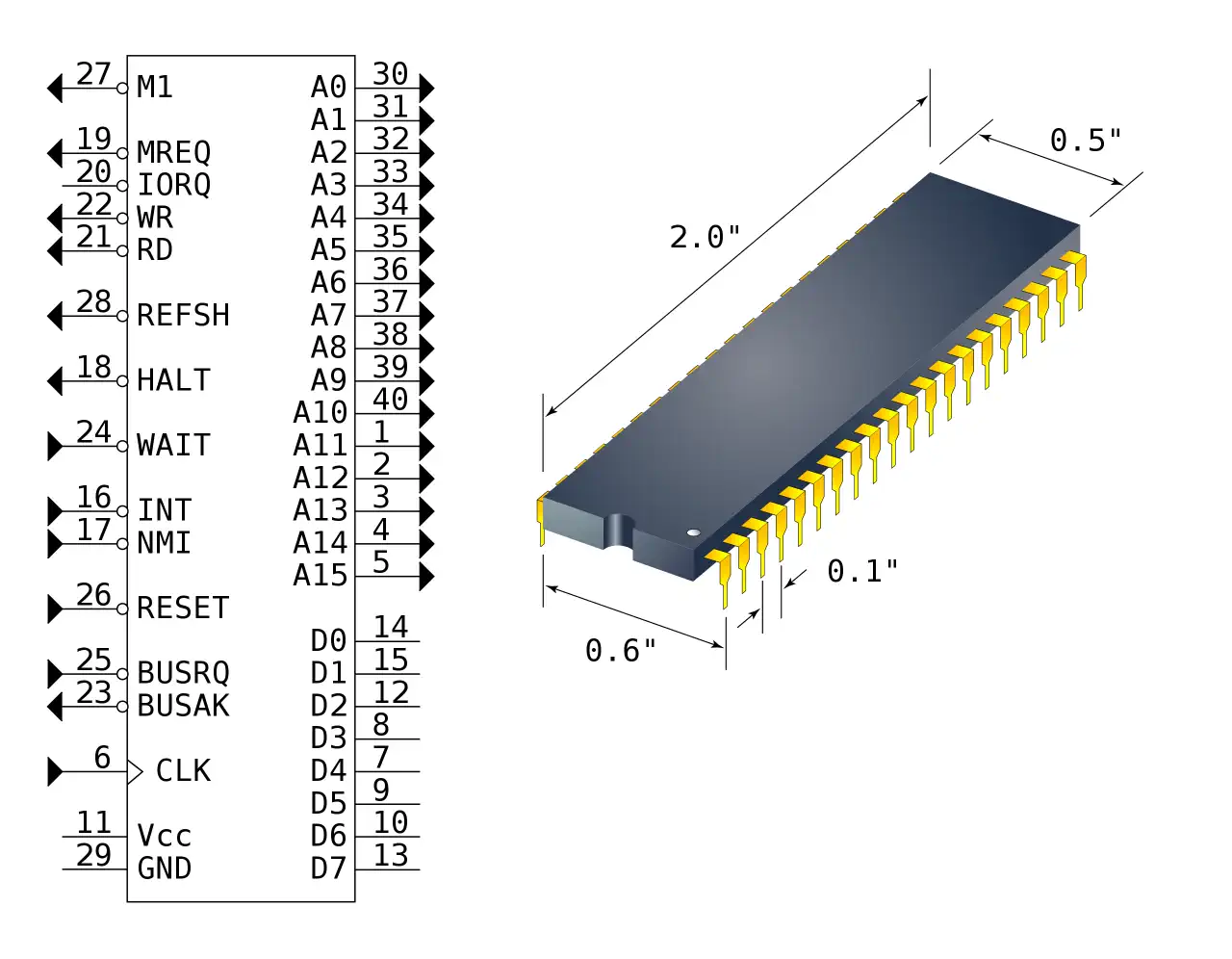
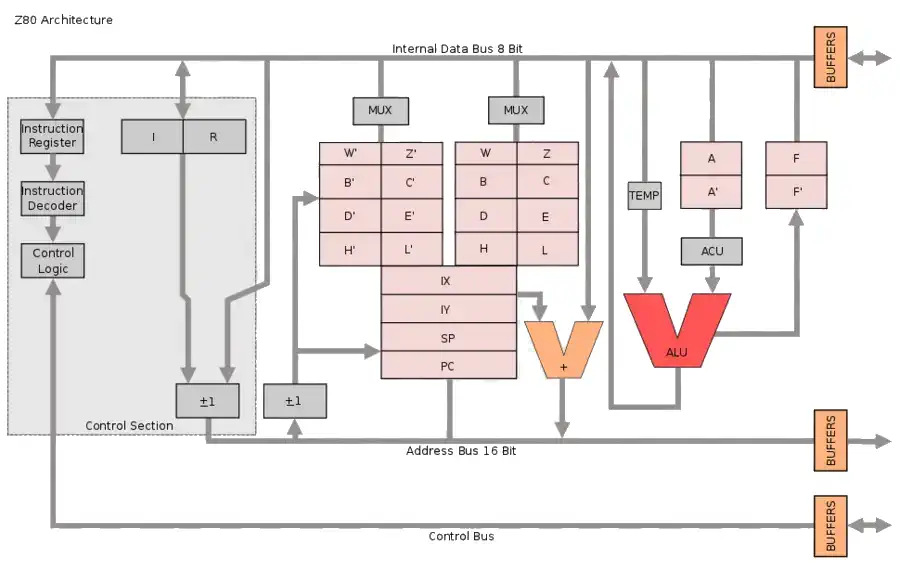
VRAM: 16kB Sound Chip General Instruments AY-3-8910 Programmable Sound Generator Sound 3 wave channels + white noise Display Chip Texas Instruments TMS9118NL VDP Display 40x24 text
32x24 16 color text, pattern based
256x192 16 color, 2 color per 8 pix. Best Text 40x24 Best Color 16 colors (2 per 8 pixels) Graphics 256x192 in 16 colors Sprites 1 color, 16x16, 4/scanline, 32 total System OS MSX 1 BIOS / MSX BASIC Storage External Tape, ROM cartridges Original Price ¥49,800
